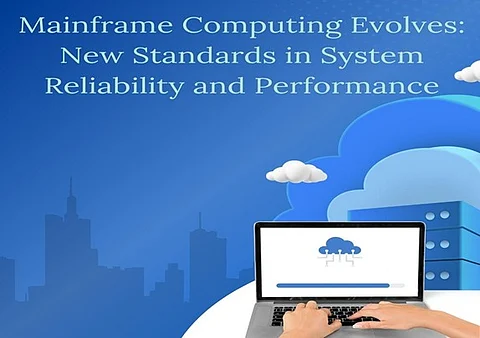

In a groundbreaking study on the evolution of enterprise computing, U.S.-based data systems analyst Jagadish Raju explores how mainframe systems are evolving with advanced reliability frameworks. His in-depth analysis highlights how modern mainframe architectures are being adapted to address the increasing complexities of enterprise computing needs.
Modern mainframe computing is built on three key principles: reliability, availability, and serviceability (RAS). These pillars have transformed enterprise systems, enabling near-continuous operation and setting new benchmarks for performance and dependability. By integrating these principles, mainframe systems have achieved impressive uptime rates of 99.999% or more, making them essential for organizations managing mission-critical operations. This evolution marks a significant step forward in ensuring system stability and operational efficiency.
Modern mainframe systems are equipped with advanced self-monitoring technologies that proactively identify and resolve potential issues. Features like real-time error detection and correction in processor cache and main memory can address multi-bit errors as they occur. Additionally, mechanisms such as processor instruction retry, which automatically re-executes failed instructions, and dynamic hardware deallocation, which isolates faulty components without interrupting operations, ensure seamless performance. These innovations enable uninterrupted system functionality even in the presence of hardware challenges.
Mainframe serviceability has evolved to include innovative approaches that simplify and enhance system maintenance. Modern systems now feature hot-swappable components, allowing replacements without shutting down the system and minimizing downtime. These advancements are further supported by built-in diagnostic tools that quickly detect issues and predictive failure analysis that identifies potential problems before they affect performance. Together, these features have shifted system maintenance from a reactive approach to a proactive one, improving efficiency and reliability.
A notable innovation in mainframe computing is the implementation of advanced data protection mechanisms. Systems now feature robust transaction management that ensures data consistency even during system failures. The integration of geographic distribution and disk mirroring technologies provides unprecedented levels of data redundancy, protecting critical information across multiple failure scenarios. These protection mechanisms have become increasingly crucial as organizations face growing data security challenges.
The software architecture in modern mainframes has undergone significant transformation, introducing dynamic system maintenance capabilities that allow updates without system restarts. This innovation has practically eliminated the need for planned downtime during software updates, a crucial advancement for organizations requiring continuous operation. The modular nature of modern mainframe software enables rapid updates and patches while maintaining system stability.
The integration of RAS principles has created a foundation for future innovations in enterprise computing. These systems now support seamless component failover, layered error recovery, and advanced diagnostic capabilities, positioning mainframe computing at the forefront of reliable enterprise-level data processing. The architecture's ability to handle increasing computational complexity while maintaining exceptional reliability standards demonstrates its crucial role in shaping future computing infrastructure. This adaptability ensures that mainframe systems remain relevant in an ever-evolving technological landscape.
Modern mainframes have achieved remarkable efficiency through modular design principles. This approach allows for incremental system improvements without requiring complete system overhauls, reducing operational costs and administrative overhead while improving overall system performance. The implementation of dynamic workload balancing ensures optimal resource utilization, even when parts of the system are under maintenance. This efficiency extends to both hardware and software components, creating a comprehensive approach to system optimization.
Mainframe computing continues to redefine enterprise-level data processing, offering unmatched reliability and the ability to operate for extended periods without planned downtime. As the demand for data processing grows in the digital era, these advancements set a new benchmark for mission-critical operations. With features like advanced recovery mechanisms and predictive maintenance, modern mainframes provide a strong and dependable foundation for future technological progress, solidifying their role as a cornerstone of enterprise computing.
In conclusion, Jagadish Raju underscores that organizations that embrace and apply these principles will gain a significant edge in today’s data-driven landscape. His research demonstrates how mainframe computing continues to adapt to the demands of modern enterprises, setting new benchmarks for reliability and performance while addressing the challenges of evolving technology.
